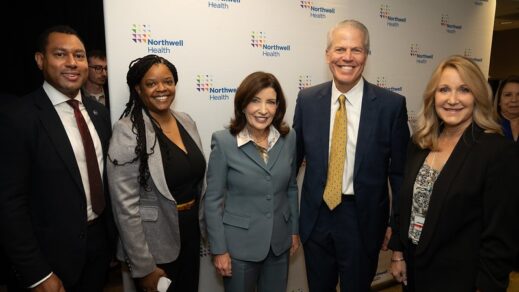Research Focus
The innate immune system through its pattern-recognition receptors (PRRs) acts as the first line of defense where its faithful activation protects the host not only from infectious agents but also from sterile/noxious molecules.
We are broadly interested in PRRs including a class of cytosolic NLR (nucleotide-binding domain leucine-rich repeat-containing) proteins that assemble into inflammasomes and orchestrate downstream signaling cascade dictated by many factors including ligand and cell type.
Inflammasomes are regarded as a central apparatus that recruits and activates caspase-1, leading to the processing of pro-inflammatory cytokines (IL-1b, IL-18) and Gasdermin D (GSDMD) to induce cytokine release and an inflammatory cell death termed pyroptosis. Importantly, the regulated inflammasome signaling is vital for homeostasis, and tissue repair and is widely considered beneficial to the host. However, if unchecked, can result in severe inflammatory outcomes, chronic disease, tissue injury, and even fatalities.
The overarching goal of the laboratory is to decode the molecular and mechanistic basis of innate immune signaling, especially the regulatory mechanisms and organizing principles underlying inflammasome actions using multi-disciplinary approaches including biochemistry, cell biology, super-resolution imaging, structural biology, and in vivo approaches. Understanding the regulatory circuitry along with biological and chemical cues will aid us to develop novel therapeutic modalities based on PRR-based molecular signatures.
Current Projects
Supramolecular Organizing Centers (SMOCs) in Inflammation, Cell death, and Anti-tumor Immunity: Signaling and Regulatory Mechanisms
SMOCs are location-specific higher-order signaling complexes that are formed at various sub-cellular sites, assisting signal amplification to reach a response threshold and potentially defining the specificity of cellular response in response to infectious or non-infectious (sterile) insults. We have identified microtublule organizing center (MTOC) as SMOC where functional inflammasomes, assemble, activate and degrade. We are interested in unveiling how the SMOCs differentiate and are reorganized in response to pathogenic/sterile insults. Importantly, their sub-cellular trafficking and assembly mechanisms.
Organ-Specific Inflammasomes: Signatures and Signaling in Inflammatory Diseases
Various inflammasomes have been depicted to play a critical role in the innate immune response against noxious stimuli in the gastrointestinal (GI) tract. In GI tract, inflammasomes have been shown to trigger inflammatory signaling. through germline-encoded pathogen-encoded pattern recognition receptors (NLRP1, NLRP6, NLRP3, Pyrin and AIM2). These receptors are constitutively expressed by intestinal epithelial cells, intestinal macrophages, antigen-presenting cells, and neutrophils. Clinical and experimental evidence increasingly and strongly implicates excessive inflammasome activation and production of IL-1 in the pathogenesis of inflammatory disease. It is entirely possible that the cell type distribution micro pathology triggered by different inflammasomes accounts for the chronic inflammatory state. We are interested in the elucidation of organ and cell-type-specific inflammasome activity that will lead to the development of site-specific therapeutics that may aid in suppressing inflammasome-associated disease.
Mechanisms Underlying Non-canonical Inflammasome Signaling
In the non-canonical inflammasomes, an NLR-type scaffold is not required for the processing of cytosolic lipopolysaccharide (LPS). In this pathway, caspases such as caspase-11 in mice and -4/5 in humans, directly bind cytosolic lipopolysaccharide LPS, which triggers caspase-1 oligomerization and renders catalytic activity, resulting in pyroptotic cell death. Besides LPS, caspase-11 is also activated by endogenous damage-associated molecular patterns, such as oxPAPC, an LPS mimic molecule generated by the oxidation of plasma membrane phospholipids during infection and tissue damage. Loss of caspase-11 renders mice susceptible to Burkholderia pseudomallei, a Gram-negative bacterium. However, over-activation of caspase- 11 in endotoxemia or polymicrobial sepsis leads to organ injury and lethality. We are interested in unveiling how non-canonical inflammasome recognizes signals and underlying mechanism of assembly into signaling competent state.
Funding Support
- NIH R21 AR079766 Magupalli (PI) 07/12/2021-06/30/2023 “Autophagic regulation of inflammasome-mediated hyperactive state in living macrophages“
- Faculty Career Development Award, Boston Children’s Hospital, Harvard Medical School, Magupalli, Office of Faculty Development, BTREC/CTREC 2021, Magupalli (PI) 07/01/2021-06/30/2023 “Mechanisms Underlying Sustained Cytokine Release in the Hyperactive Macrophage State“
Education and Training
Faculty Appointment
Assistant Professor of Pediatrics, Harvard Medical School, Boston, MA, USA
Postdoctoral Institutions
Harvard Medical School, Boston, MA, USA.
University of Washington, Seattle, WA, USA.
Doctoral Institution
PhD, Neurobiology; Saarland University Medical Center, Homburg/Saar, Germany
Degree Institutions
MSc Animal Sciences (Animal Biotechnology); University of Hyderabad, Telangana, India
BSc Botany (Honours); Utkal University, Bhubaneswar, India
Venkat Magupalli, PhD, Researcher Profile PDF
Selected Publications
1) HDAC6-mediated aggresome-like mechanism for NLRP3 and Pyrin inflammasome activation. Venkat Giri Magupalli*†, Roberto Negro*†, Arthur V. Haeunstein*, Yuzi Tian*, Giuseppe Di Caprio, Wesley Skillern, Qiufang Deng, Pontus Orning, Hasan B. Alam, Zoltan Maliga, Humayun Sharif, Jun Jacob Hu, Charles L. Evavold, Jonathan C. Kagan, Florian I. Schmidt, Katherine A. Fitzgerald, Tomas Kirchhausen, Yongqing Li† and Hao Wu†. Science. 2020;369(6510). Epub 2020/09/19. doi: 10.1126/science.aas8995. †Co-corresponding author. *Co-first authors, contributed equally.
2) Unified polymerization mechanism for the assembly of ASC-dependent inflammasomes. Alvin Lu*, Venkat Giri Magupalli*, Jianbin Ruan*, Qian Yin, Maninjay K. Atianand, Matthijn Vos, Gunner F. Schröder, Katherine A. Fitzgerald, Hao Wu and Edward H. Egelman. Cell. 2014; 156: 1193-1206. *Co-first authors, contributed equally.
3) Structural mechanism for NEK7-licensed NLRP3 inflammasome activation. Humayun Sharif, Li Wang, Wei Li Wang, Venkat Giri Magupalli, Liudmila Andreeva, Qi Qiao, Arthur V. Hauenstein, Zhaolong Wu, Gabriel Nunez, Youdong Mao, and Hao Wu. Nature. 2019; 570 (7761): 338-343.
4) Cryo-EM structures of the active NLRP3 inflammasome disk. Le Xiao, Venkat Giri Magupalli, and Hao Wu. Nature. 2022; Nov 28. Doi: 10.1038/s41586-022-05570-8. Online ahead of print.
Full List of Publications
Venkat Magupalli Full List of Publications
We Are Hiring
We have open positions for research technicians and Postdoctoral fellows. Applicants will be evaluated on a rolling basis until the positions are filled. Interested applicants should send a cover letter, CV, and contact information for three references to [email protected].


